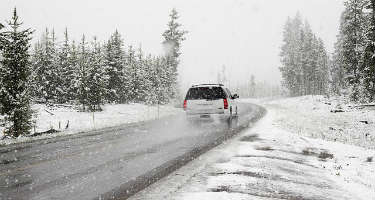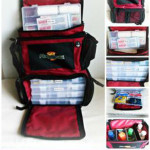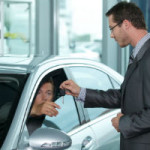Drive Safely In Winter Weather
Driving in the winter can be demanding. There are so many risks to take into account, from black ice to white-out conditions that cloud our view. If you live in a snowy area, you’ll need to be prepared to drive your car in these conditions. Preventive maintenance and adequate planning are key. Here are some tips on how to drive safely during the winter, safety precautions you should take and how to avoid frosty dangers.
Tips On How To Drive Safely in Winter Weather
1. Decelerate and Accelerate Slowly
- Accelerate slowly, by applying gas in a smooth, even manner. This is the best way of avoiding skids, and the only way to regain traction after you’ve started to slip on the pavement.
- Take a substantial amount of time to slow down. The process of slowing down usually takes longer on roads that are icy.
2. Drive Slowly
- Every aspect of driving, including stopping, accelerating, and turning, takes slightly longer on roads that are covered with snow, as you’re tires struggle to maintain traction.
- You should give yourself enough time to maneuver on the icy roads by steering slowly.
3. Service Your Car Before Getting On The Road
Nobody wants their car to break down. Break downs are bad news under any circumstances, but a break down in the snow and cold is even riskier. It’s advisable that you ensure your car is maintained in an optimal state before you hit the road.
- You should perform routine maintenance for your vehicle by visiting your mechanic. Prepare for the ice by getting a tune-up before the snow hits your area.
- Ensure that your car is checked thoroughly for repairs, leaks, replacements, worn hoses, and any other parts that may be needed.
4. Don’t Stop If You Can Avoid It
- Don’t get stuck in the snow. Inertia can be difficult to battle against. When you come to a stop sign of traffic light, decelerate until you reach a comfortable crawl, but don’t stop completely. This allows you to maintain traction in the snow or on the ice, without losing your forward momentum.
5. Don’t Accelerate Too Much On Hills
- Always be careful. Applying too much gas on a snowy or icy surface can get your wheels spinning. You don’t want to lose traction as you’re heading up a hill.
- Accelerate a bit before you reach the hill so you can cruise to the top.
- Reduce your speed when you reach the hill’s crest, and then continue downhill slowly.
Safety Precautions For Winter Driving
a) Prepare Your Car
- You should stock your vehicle with survival kits for winter driving. These kits contain salt or sand, snow shovel, and ice scrapers that can really help when the temperature begins to drop.
- Check your tires (preferably with the help of a trained technician) to see if it’s safe to keep your current set or if you should upgrade to a set of snow tires.
- You should also make sure that your gas tank is at least half full at all times, so you can keep warm if you get stranded or stuck along the way.
- The condition of your car’s windshield wipers should be maintained in a good state, and the reservoir of your windshield wiper fluid should be filled to enable you to clear ice and snow quickly.
b) Watch The Weather
- If you plan on traveling when the weather conditions could get extreme, you should take precautionary measures by checking weather and traffic reports on the internet, local news stations, and other weather sites to be prepared.
- In most places, you can also subscribe for text message weather alerts tailored to your region.
c) Driving In Winter Conditions
- You should always clear the ice and snow from your car, including your reflectors, windows, trunk, mirrors, hood, lights, and roof before leaving your parking area.
- When driving, ensure that your car’s headlights are always on and cleared of snow for visibility.
- If snow banks on the sides of the road limit your view, you should use caution to avoid oncoming traffic.
- Increase your distance from the car ahead of you and lower your speed when you are on icy roads and the visibility is poor.
- You should be extra careful when approaching overpasses and bridges because they become icy first.
d) Getting Stuck Or Breaking Down
- If you get stranded in a snowstorm, remain in your car and wait for help.
- Run the heater of your car for at least ten minutes each hour to keep warm.
- Ensure your exhaust pipe is out of the snow when putting on your heater to avoid poisoning by carbon monoxide.
Items To keep In Your Car In Case Of Emergency
You should ensure that your car has the following things in case of an emergency:
- Water bottles
- First aid kit
- Warm clothing
- Flashlights
- Snacks
- Toolkit
- Spare tire
- Gloves
- Jumper cables
- Emergency flares
- Paper towels







